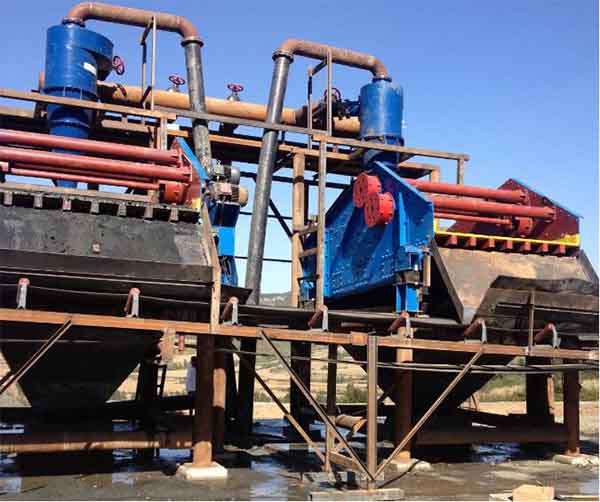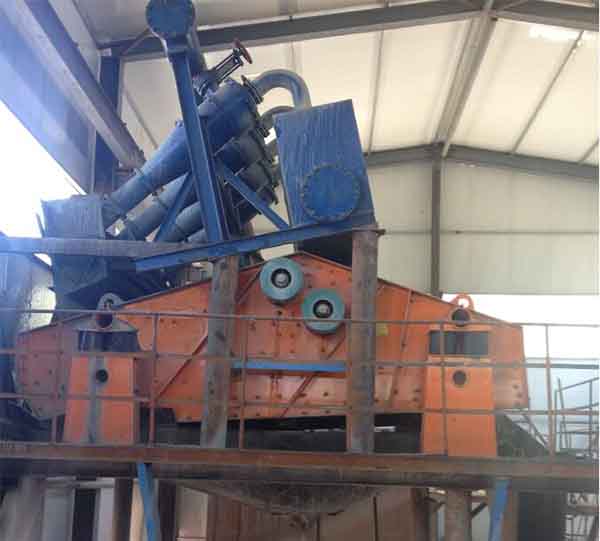Iron Ore Tailings Dewatering And Treatment
The common iron ore tailings dewatering and treatment methods mainly include iron ore tailings re-selection, iron tailings dry discharge, and iron tailings to fill the mined area, which can recover the valuable minerals in the tailings and the tailings after dry discharge can be reused. Iron ore is currently a mineral resource that is widely used and used in a large amount. However, in the process of iron ore development, the production of iron tailings also gradually increased, which further stimulated the development of iron ore tailings treatment and comprehensive utilization.
1. Iron ore tailings re-selection
According to the different properties of iron tailings ores, magnetic separation and gravity separation are often used to recover and re-select minerals with recovery value in the tailings.
A. Magnetic separation
In some iron tailings, iron occurs in magnetite, hematite, and limonite, while the gangue minerals are mainly non-magnetic quartz and calcite. The magnetic difference between the two determines that the magnetic separation method can be used to recover the tailings. In the iron. After 2-3 stages of magnetic separation, the high-gradient magnetic separation method is used for the pre-enrichment of magnetic minerals, and it is used in conjunction with the shaker process or centrifuge process of the gravity separation method to obtain iron concentrate or ilmenite concentrate.
B. Gravity separation
The spiral chute is used for the pre-throwing of iron tailings, and the shaking table is used for the reselection of strong magnetic separation concentrates. When processing fine-grained ore, the centrifuge can often be used in conjunction with a strong magnetic separator to improve the quality of the iron secondary concentrate.
2. Iron ore tailings dry discharge
The iron tailings dry discharge process system is mainly composed of a slurry pump, hydrocyclone, high-efficiency thickener, high-frequency dewatering screen, chamber filter press, and slurry conveying device.
The tailings are transported by the slurry pump to the hydrocyclone for concentration and classification. The sedimentation of the hydrocyclone enters the high-frequency tailings dewatering screen for dehydration treatment, and the dehydrated coarse-grained tailings are transported to the stockyard for storage by a belt conveyor. The overflow enters the thickener for concentration treatment and filter press for treatment.
Compared with wet tailings discharge, dry tailings discharge can save about 30%, and the number of stockpiled tailings increases by about 20%-30%. The dry discharge method of iron tailings greatly saves the construction costs of traditional tailings ponds and conventional maintenance costs, realizes full utilization of backwater, and avoids the risks of dam breakage, overfilling, and collapse of the tailings pond. Dry tailings are easier to recover and utilize and have obvious social and economic benefits.
3. Filling the mined area with iron tailings
A. Full tailing cement filling technology
In this method, the dehydrated iron tailings are mixed with cement, fly ash, etc. to form a filling aggregate, and the filling slurry is sent to the mining and filling area to be filled by the self-flow of the pipeline.
B. High-water consolidation and full tailings filling technology
The first material is mainly made of aluminate and sulphoaluminate and the second material is mainly made of anhydrite, quicklime, and coagulant are prepared and transported separately. The mixing is carried out before filling, and then the filling slurry is sent to the mining and filling area by the automatic flow of the pipeline.
Related Products
There are no relevant articles.




